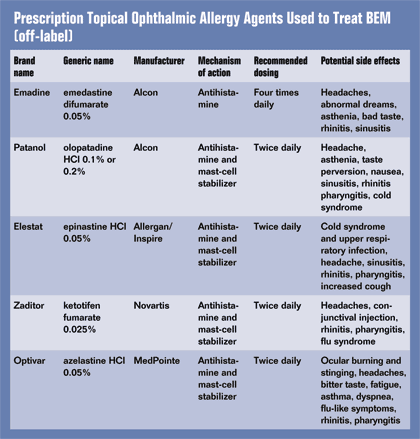Observation, slit-lamp exam enable diagnosis of benign eyelid myokymia
Benign eyelid myokymia (BEM), as the name implies, is a benign and idiopathic condition in which, typically, the orbicularis oculi muscle of one of the lower lids (occasionally, the upper eyelid may also be affected) twitches or displays spontaneous and fine fascicular contractions.
Although almost invariably unilateral, BEM may alternate sides. The condition may occur at any age, is self-limited and intermittent and typically lasts from several hours to days or weeks. Although the pathophysiology is not well understood, it is thought that precipitating factors such as fatigue, stress and excessive caffeine/alcohol/nicotine intake may result in irritation of the orbicularis’ nerve fibers. Patients may report symptomatology such as uncontrolled blinking, twitching, jumping of the eyelid or oscillopsia (rare).
Clinical evaluation of individuals with these symptoms includes a thorough medical history, discerning external patient observation and careful slit-lamp examination. Medical-ocular history should be comprehensive and should include such questioning as antipsychotic medication usage, past CN VII palsy and prior injection in or around the eye. Patients should be observed for overt eyelid twitching in isolation, associated with speaking or accompanying facial/neck/limb involvement.
Anterior segment biomicroscopy will demonstrate contributory conditions such as trichiasis, blepharitis, keratitis, dry eye syndrome, corneal abrasion, recurrent corneal erosion and foreign body. In some instances, BEM will not be observed during the course of examination.

In these instances, superior oblique myokymia (SOM) should be ruled out. (While viewing the suspect eye under the slit lamp, the patient is directed to look down and in toward his or her nose. SOM, if present, will demonstrate subtle ocular oscillations lasting less than 10 seconds.)
Differential diagnosis of BEM includes blepharospasm, hemifacial spasm, Meige syndrome, aberrant regeneration of CN VII, trigeminal neuralgia, Tourette syndrome, spastic-paretic facial contracture and SOM.
Management of BEM includes patient reassurance, dietary/environmental modification and medical therapy. Patients should be informed that the condition is benign and self-limiting. They should also be educated regarding the necessity for obtaining proper rest, limiting caffeine/alcohol/nicotine intake and stress management.
Medical therapy is usually not necessary unless symptoms are severe, the patient requests treatment or oscillopsia is present. Initially, the topical anti-allergy medication Livostin (levocabastine, Novartis) was found to be effective in treating many cases of BEM (off-label application). It was theorized that Livostin, a pure antihistamine, exerted its beneficial effect by prolonging the refractory period of the orbicularis oculi.
Subsequently, other antihistamine and antihistamine-combination products also proved successful in treating the condition.
Lastly, in prolonged or severe cases of BEM, botulinum toxin A (Botox, Allergan) injection to the affected eyelid area has been used.
For more information:
- Michael J. Trad, OD, is in private practice in Rockford, Ill. He can be reached at e-mail: mjtrad4u@hotmail.com.
